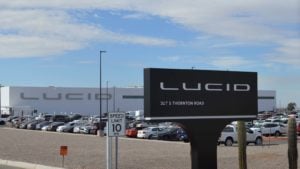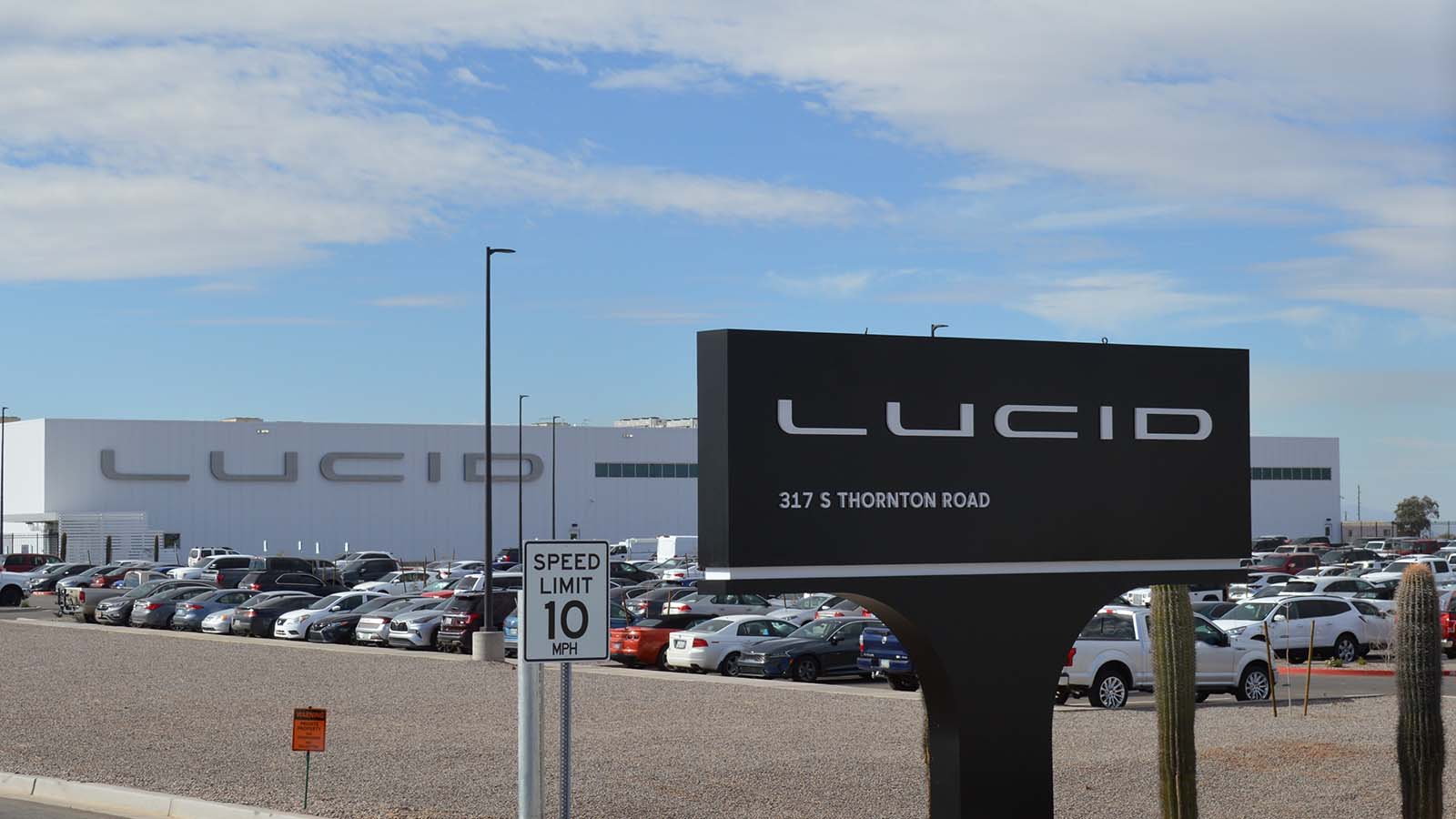Even before the news broke on Monday that Lucid Group (NASDAQ:LCID) had received a subpoena from the SEC regarding its SPAC deal, it was clear that investors were using December to take a healthy break from the electric vehicle space.

Closing out last Friday, LCID stock was down 13.6% for the week and Chinese EV competitor Nio (NYSE:NIO) was down more than 20%. The Global X Autonomous and Electric Vehicles ETF (NASDAQ:DRIV) is lost 4.4% on the week.
To be sure, whatever concerns the market has about the SEC’s query should be taken seriously. But early Tuesday morning, pre-market trading shows LCID stock is regaining most of Monday’s 5.1% loss as indicators show markets opening in the green.
The question is whether you should consider buying either Lucid or Nio on the December EV dip? I’ll examine both businesses.
LCID Stock Still Up This Past Month
In November, I suggested that Lucid was an excellent long-term speculative buy. It’s important to note the word “speculative.”
While I don’t think there’s any question the Lucid Air is popular with buyers — it has more than 17,000 reservations for the Lucid Air, the 2022 MotorTrend Car of the Year — until it starts delivering those vehicles and ringing up the register, there is above-average risk inherent in owning LCID stock.
That said, it sits in an enviable position with strong pre-orders worth $1.7 billion, a factory in Arizona that can produce up to 34,000 vehicles a year, and $4.8 billion in cash on its balance sheet.
What’s not to like? How about the supply chain issues affecting the entire world.
Toyota Motor (NYSE:TM) cut its November production worldwide by 15% due to chip shortages. That said, it still thinks it can reach its 2021 target of nine million vehicles, so all is not lost.
CEO Peter Rawlinson mentioned the shortages in the Lucid’s Q3 2021 press release:
“We see significant demand for the award-winning Lucid Air, with accelerating reservations as we ramp production at our factory in Arizona. We remain confident in our ability to achieve 20,000 units in 2022,” Rawlinson stated on Nov. 15.
“This target is not without risk given ongoing challenges facing the automotive industry, with global disruptions to supply chains and logistics. We are taking steps to mitigate these challenges, however, and look forward to the launch of the Grand Touring, Touring, and Pure versions of Lucid Air through 2022.”
I’m not sure if investors would be disappointed if, this time next year, Rawlinson confirmed that it was on target to produce 18,000 vehicles in 2022, 2,000 short of its stated goal. But, of course, 18,000 is still a big accomplishment.
Over the past month (thru Dec. 3), LCID is up 25% and trading in the mid-$40s, which values its equity at $75 billion. With no sales or earnings to value it, I’d suggest that its price-to-book ratio of 17.9x is quite rich. You can buy Ford (NYSE:F) at 2.2x book despite its stock more than doubling year to date. However, you’d have to pay 40.3x book to own Tesla (NASDAQ:TSLA).
It’s all relative.
Nio’s Record Quarter
Nio stock is trading within 6% of its 52-week low of $30.71 and 52% below its one-year high of $66.99.
It’s hard to believe how far its share price has fallen. On Dec. 1, it reported November deliveries of 10,878 vehicles, 105.6% higher than last November, and the most delivered in a single month. Through 11 months, it has delivered 80,940 vehicles, 120.4% higher than the same period last year.
What’s most impressive is the diversity of its delivery numbers: 2,683 ES8s (6-7 seater SUV), 4,713 ES6s (five-seater SUV), and 3,482 EC6s (five-seater coupe SUV), the company’s newest vehicle.
When I last wrote about Nio at the end of October, I argued that the company had yet to shake its Chinese discount, a reality that many overseas companies face that are listed in North America.
“Tesla is trading up almost $17, at 24.3x sales. Meanwhile, Nio is trading just below $40 at 14.6x sales. You would think that Nio, being at approximately the same stage as Tesla was in early 2019, would get a higher multiple for its sales,” I wrote on October 25.
However, I ultimately concluded that the company’s sizeable operating loss was scaring away investors, not an aversion to Chinese companies.
I’ve said it before, under $40, I think NIO is an excellent long-term buy. Of the two stocks, it’s the less speculative option.
The Bottom Line
If I could only own one stock, at this point, given how much further ahead Nio’s business is compared to Lucid, combined with the fact NIO stock has gotten hammered much more than LCID, I would lean toward the more established company.
That said, if you can afford both, I would buy both at this point, maybe dividing your purchase 60% Nio and 40% Lucid.
On the date of publication, Will Ashworth did not have (either directly or indirectly) any positions in the securities mentioned in this article. The opinions expressed in this article are those of the writer, subject to the InvestorPlace.com Publishing Guidelines.
Will Ashworth has written about investments full-time since 2008. Publications where he’s appeared include InvestorPlace, The Motley Fool Canada, Investopedia, Kiplinger, and several others in both the U.S. and Canada. He particularly enjoys creating model portfolios that stand the test of time. He lives in Halifax, Nova Scotia.
